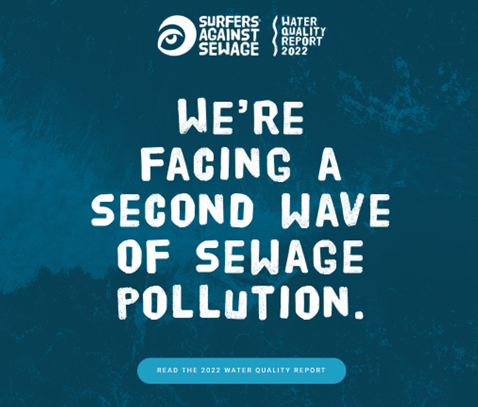Evidence of illegal sewage dumping revealed
in SAS 2022 Water Quality Report
24 November 2022
We found water companies have committed 146 ‘dry spills’ in the last year. For the first time, we’ve used rainfall data to investigate potentially illegal ‘dry spills’. Sewage outflows are only permitted in ‘unusually heavy rainfall’, but our analysis shows water companies have been dumping untreated sewage into our waterways even when there hasn’t been any rain. We would love to hear from water companies on why they’re releasing highly concentrated swathes of raw sewage into our parched waterways during one of the hottest summers on record?
The SAS Water Quality Report 2022 reveals 146 ‘dry spills’ in the last year, using rainfall data to show potentially illegal spills from CSO overflows.
SAS looked only at the most popular surf and swim spots, so not at Barry and Penarth
“Dry spills” are evident also for Lower Penarth’s Brockhill Rise CSO which spilled 114 times in 2020 and 67 times last year, averaging near 3 hours a time. Other CSOs in Penarth discharge many fewer times, most 10-20 times nearer to storm frequencies. In Barry, The Knap long outfall and Barry Dock storm CSO are worse (Welsh Water data).
Brockhill Rise CSO, goes from the pumping and storage plant on the
Railway Path (left) to the discharge point just below the low tide mark
NRW’s licence for the Brockhill Rise CSO specifies discharges are permitted solely of “storm sewage”. Welsh Water built a huge underground storage tank on the railway path in the noughties. The CSO was modernised and discharges just below the low tide mark. Welsh Water have to store peak flow there until there’s capacity to pump it through to Cog Moors works for treatment. Instead, they appear to discharge it frequently to sea, evidently during many non-storm times.
Welsh Water should report the licence breach to NRW but don’t. And NRW make no check of the clearly over-frequent
use of the CSO. Welsh Water save on the treatment
costs at Cog Moors and on the pumping cost to get the sewage there and pump the
treated effluent to the Lavernock Point long outfall.Extract of discharge consent from Brockhill Rise CSO
The discharge pipe is high capacity 1050mm
Barry&Vale
FoE met with Heledd Fychan MS for the Cardiff region early November, briefing
her on flooding due to sewer overload relating to the 23 Dec’2020 rainstorm, and
unlawful discharges of untreated sewage. Flooding in Dinas Powys happened when
the surface water sewers were unable to discharge into the river at high flows
and the ‘attenuation’ tanks at Llandough hospital discharged quickly to the
Eastbrook which itself overflowed and fed the Cadoxton river. The VoG Section 19 statutory report ducked these issues while the Section 19 report for Penarth is still delayed.
Heledd agreed
to take up the issues, alongside her findings on flooding in the Rhondda. The last Senedd report in March disregarded sewage
impacts on sea recreation, as does the Welsh Government. Heledd agreed this needs
to change - the special Senedd committee on the floods could take up the evidence
on NRW failing to regulate sewage spills during both floods and dry spells.


